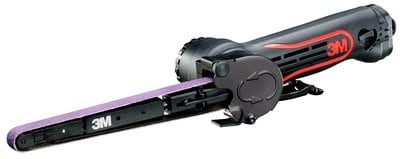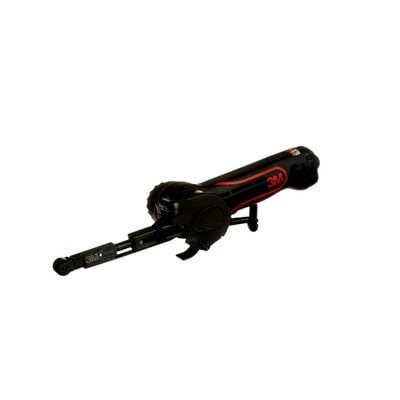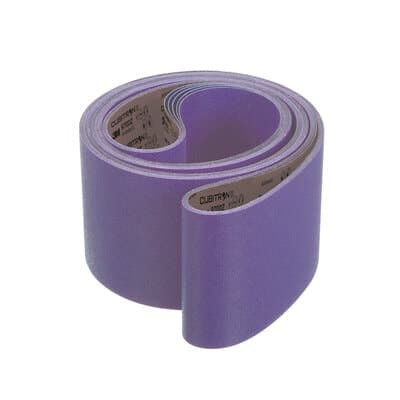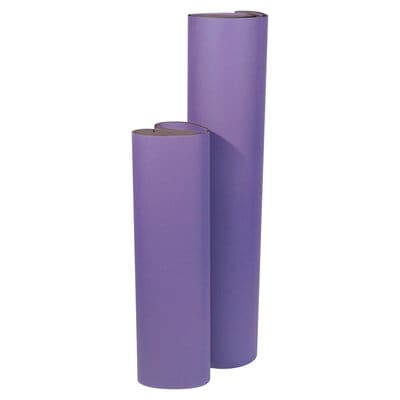- Abrasives and Accessories
- Adhesives, Sealants and Accessories
- Cleaning Supplies and Equipment
- Drill Bits and Accessories
- Electrical Items
- Hardware and Fasteners
- Health and Safety
- Lubricants and Penetrants
- Manufacturers
- Masking Products
- Office Supplies
- Packaging and Shipping
- Paint Application Products
- Painting Equipment and Supplies
- Polishing and Buffing
- Tapes, Films and Accessories
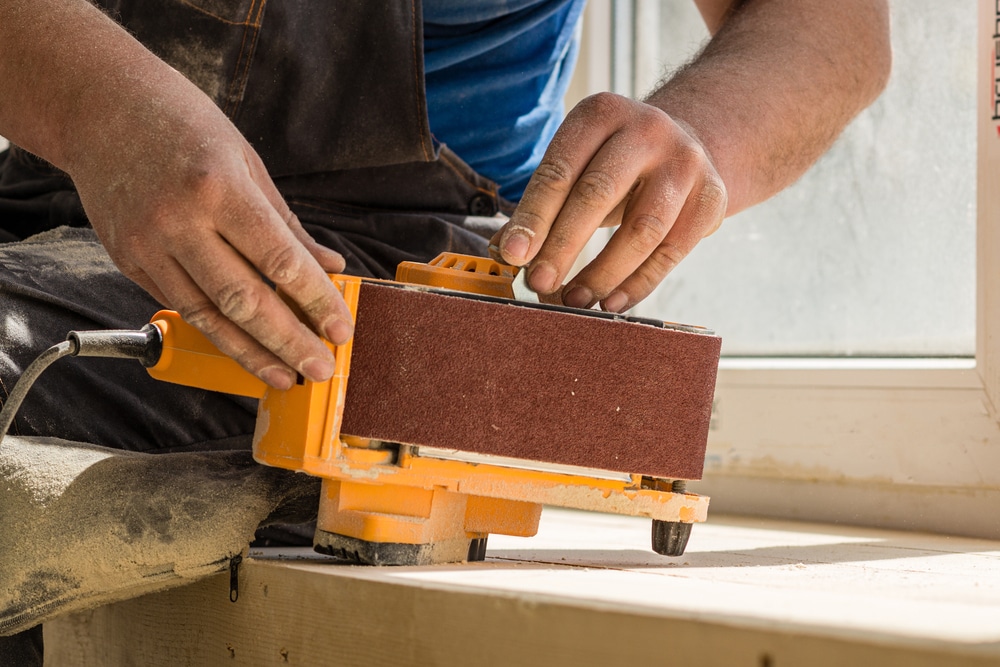
Belt Sander vs. Edge Sander: Which is Right for Your Application?
April 23, 2025
Whether for mass-scale woodworking or custom metalworking, choosing the right sanding equipment can significantly impact both the quality of your finished products and your operational efficiency.
As industrial professionals serving businesses across Ohio for over a decade, we’ve guided countless customers through the selection process between belt sanders and edge sanders.
Both tools serve essential functions in material preparation and finishing, but understanding their distinct applications can help you make better equipment decisions for your specific needs.
So, which one is better for your specific industrial needs? Read on to learn more.
Belt Sanders vs. Edge Sanders: The Basics
Before diving into comparative analysis, it’s important to establish what each of these sanders does. Belt and edge sanders may seem similar at first glance, but they’re designed for different applications and offer unique advantages in various industrial contexts.
What Is a Belt Sander?
A belt sander uses a continuous loop of sandpaper that rotates around two or more drums.
These versatile tools come in various sizes, from handheld portable models to large stationary machines. The sanding belt moves in one direction, typically at high speeds, allowing for rapid material removal. Belt sanders excel at working on flat surfaces and can be used on various materials, including wood, metal, and composite materials.
What Is an Edge Sander?
Edge sanders, as the name suggests, are specialized tools designed primarily for sanding edges, particularly on wooden workpieces.
They typically feature a vertical sanding belt and a work table that can be adjusted to various angles. The design allows for precision work on edges and end grain and for creating bevels and curves that would be difficult to achieve with standard belt sanders.
Performance Considerations
When evaluating which sander best fits your operation, performance factors like speed, precision, and versatility play crucial roles in your decision-making process.
Speed and Material Removal
Belt sanders generally offer superior material removal rates compared to edge sanders. The design of a belt sander, particularly industrial models, allows for aggressive sanding when needed. This makes belt sanders ideal for initial stock preparation, dimension adjustment, and situations where significant material needs to be removed quickly.
Edge sanders, while still efficient, are typically used when more control is needed. They’re less about rapid material removal and more about achieving precise edges and contours.
When working on detailed edge finishing or when preparing pieces for joinery, the controlled approach of an edge sander often delivers superior results.
Precision and Control
When it comes to precision work, edge sanders typically offer greater control.
The vertical orientation of the belt and the presence of an adjustable work table make edge sanders excellent for creating precise angles and consistent edges. This proves particularly valuable in furniture manufacturing, cabinetry, and other applications where joint precision directly impacts product quality.
Belt sanders excel at flattening larger surfaces but may require more operator skill when working on edges or irregular shapes. Many industrial users find that while belt sanders can handle a wider range of tasks, edge sanders deliver superior results for their specialized function.
Application Suitability
Different industrial applications call for different tools. Your specific industry and typical projects should inform your sander selection.
Woodworking Applications
In woodworking operations, both sanders have their place.
Belt sanders prove invaluable for dimensioning lumber, removing mill marks, and preparing large flat surfaces. They’re often the first power sander used in a production sequence.
Edge sanders shine in furniture and cabinet shops where perfect edges are essential for quality joinery. They excel at tasks like squaring end grain, preparing edges for gluing, and creating precise bevels.
Many furniture manufacturers consider edge sanders indispensable for consistent, production-level edge work. And like orbital sanders, they’re the go-to choices for finishes.
Metalworking Considerations
For metalworking applications, industrial belt sanders equipped with appropriate abrasive belts handle deburring, weld preparation, and finish work effectively. Their aggressive material removal capability makes them suitable for shaping and finishing metal components.
Edge sanders see less use in pure metalworking operations but remain valuable in mixed-material manufacturing environments. When metal components need to interface with wooden elements, edge sanders can help achieve the necessary precision.
Weighing In: Which Is Better
No sander is better than the other. Both have their place in your business.
Hence, when deciding between a belt sander and an edge sander, consider your primary applications, production volume, space constraints, and budget. Many industrial operations benefit from having both types available, using belt sanders for initial preparation and edge sanders for precision finishing work.
Smarter Choices, Smoother Results
Edge and belt sanders are useful in their own ways, so one isn’t necessarily better than the other. It’s all about being clear about your applications, operational needs, and project demands.
Whether you’re outfitting a new production facility or upgrading existing equipment, selecting appropriate sanding tools and accessories can be another challenge — and it’s one that we rise up to.
For all your sanding equipment and accessory needs, choose JAM Industrial Supply.
We offer a wide array of sanding equipment, including belt sanders, as well as the accessories to keep yours in peak condition.
Contact us today for help finding the right equipment for your needs!

